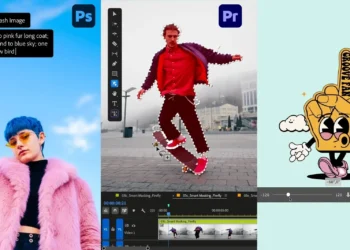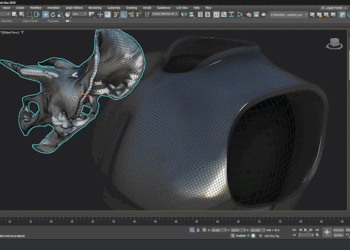Foundry has announced the released of Modo 12.1, the second of 3 planned updates in the 12 series. According to the Modo release notes, improvements include:
A new integrated VR viewport that allows the user to view and model using a VR headset. In this version, it is possible to manipulate item’s transforms and layout scenes in addition to viewing the scene. Item editing tools include: move, rotate, scale, instance, duplicate and transform reset plus snapping tools for layout
The Viewport has also seen improvements with support for Group Masks it is now possible to mask multiple material layers with full support for group blending modes and opacity changes. The addition of a Film Roll channel allows the user to animate a two-dimensional roll of the camera relative to the camera’s film offset channels.
UV Packing times have been improved with a new algorithm and the distance between UV islands and UV border can now be more accurately controlled. There are new options to pack to a new UV map while preserving the original for a less destructive workflow. It is also now possible to pack based on Polygon Tag, which enables the ability to pack UVs to separate UDIMs based on that tag.
Changes to MeshFusion Surface Strips give the user more control over the generated topology.
This update adds changes to speed up the keyframing process and reuse keyframe data. Driven Actions add the ability to reuse, retime and rig action clips in a scene, allowing the user to user Actions for the first time. There’s a new default key slope type, providing smoother interpolation between keys, vastly reducing the amount of key adjustment required whilst animating. It’s now much easier to manipulate multiple keys in the Gradient Editor using the new Box Transform Tool and the Mini Gradient Editor adds a number of improvements including the addition of a menu that allows you to save and load presets.
Modo’s procedural modelling system gains a number of new Mesh and Selection Operations. The ‘Surface Constraint’ mesh operation is a procedural version of the Background Constraint, which allows the user to procedurally constrain geometry to another piece of geometry in the scene. Other additions include the Convert Selection, Select Connected, and Select Loop selection operators, and the Edge Slide, Push, Edge Split, Polygon Merge and Polygon Unify mesh operations.
The Vertex Normal Toolkit has been updated to make it simpler but with more options for hardening or softening by specific component, by endpoint, by angle, by polygon boundary, UV boundary, and UV island boundary. There’s a new Smoothing Group manager: a UI for defining and visualizing the groups within which polygons exist. The vertex normals of a model are stored as part of Modo’s native smoothing rather than a separate vertex map, so models can now be freely edited and deformed without adverse effects on smoothing. A variety of new options for controlling surface normals have been included as part of Material Properties. And there are options for controlling the effect of smoothing groups on a per-material basis.
Finally, Modo’s UI has been refined to allow faster access. The tool palette buttons can now swap the tool palettes directly in the form. It’s now possible to toggle things like background mesh visibility, item drawing, weight map visibility and distortion directly in the 3D viewport, making these options easier to find and giving a clear visual indicator of their state. The Modo modes form includes a set-up mode button, render button, and nested centre and pivot mode buttons, allowing for further consistency between layouts. And all KITS now exist in a KITS popover form, accessed via the KITS button in the top right of the UI. Modo also comes with a new Beta layout, showcasing a number of new UI concepts for working in a single layout.
Visit the Foundry website and read the release notes to find out more about this release.








It is just me or because of the latest advances in Blender, people do not care that much about Modo anymore?